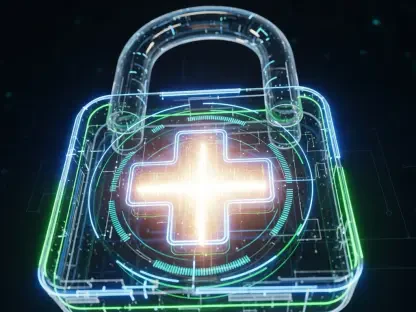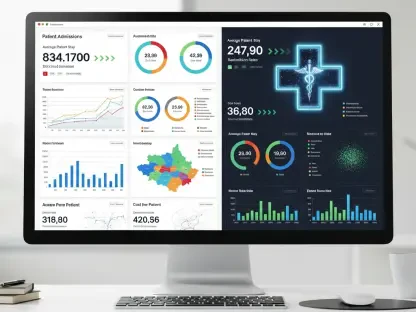In today’s healthcare landscape, fragmented workflows and communication systems pose significant challenges to the delivery of effective patient care. Interruptions in the seamless exchange of information impede critical decision-making processes, causing delays, increasing administrative burdens, and elevating the risk of physician burnout. As healthcare providers grapple with these complexities, there is a pressing need to rethink and reconstruct the flow of information across the healthcare ecosystem. Enhanced communication between payers and providers, facilitated by robust data-sharing mechanisms, plays a crucial role in informed decision-making and reducing administrative strains. This calls for a strategic overhaul, not just an upgrade, of existing systems to improve coordination and patient trust.
Communication Silos and Fragmented Data
Impacts on Patient Care Quality
The fragmentation of communication channels and data silos represents one of the most daunting obstacles hindering effective patient care. Healthcare teams often find themselves grappling with vital data scattered across isolated platforms, leading to inefficiencies and reduced care quality. In such an environment, providers are compelled to employ workaround processes that slow down care delivery and inflate costs. Disconnected workflows can jeopardize patient outcomes, emphasizing the necessity of integrating data exchange and streamlining workflows. By breaking down these silos, healthcare providers can pave the way for timely and evidence-based care, enhancing provider engagement along the way.
The inability to access a comprehensive view of patient information results in missed opportunities for preventive care and chronic disease management, thereby delaying interventions that could otherwise improve patient outcomes. Scattered patient information across multiple systems or external portals exacerbates these challenges, leading to delayed actions that can worsen clinical conditions and escalate healthcare costs. A solution lies in creating an integrated framework of communication that fosters a unified view of patient care, allowing clinicians to make informed and prompt interventions that enhance patient trust and collaboration within the healthcare system.
Financial Implications of Inefficient Systems
Inefficient communication systems incur substantial costs, both in terms of administrative overload and lost opportunities for timely interventions. Providers frequently spend excessive hours, often up to 28 hours a week, on manual administrative tasks such as prior authorizations, claims submissions, and chart retrievals. This diverts essential time from patient care and contributes to clinician burnout. The traditional fee-for-service models further contribute to data silos, creating isolated islands of information that obstruct effective clinical data exchange. This fragmentation makes achieving a comprehensive view of patient care challenging, diminishing chances for timely interventions and preventing effective coordination.
The financial burden is compounded by the inefficiencies in claims processing and reimbursement. Disjointed communication channels often lead to processing errors and claims denials, resulting in delayed reimbursements that affect the financial health of provider networks. Streamlined communication can minimize these errors, leading to faster turnover on claims and improved financial stability. By emphasizing integration solutions that foster prompt identification and closure of care gaps, systems can significantly accelerate the pace of reimbursement processes. Establishing these solutions strengthens financial stability while simultaneously enhancing patient care.
Strategies for Optimizing Operations
Integration of Real-Time Alerts
To confront the inefficiencies rooted in fragmented communication systems, healthcare providers can adopt several actionable strategies to optimize operations. Embedding real-time clinical alerts within existing Electronic Health Record (EHR) systems is one such strategy. These alerts can provide patient-specific notifications that immediately highlight potential care gaps, risk opportunities, and quality issues at the point of care. This integration ensures that providers are promptly informed of crucial alerts, allowing them to address these issues swiftly and enhance patient outcomes. Real-time alerts not only improve clinical decision-making but also foster provider engagement and streamline communication within healthcare systems.
Additionally, refining communication channels by consolidating various communication sources into a single dashboard can significantly reduce alert fatigue. Such consolidation empowers healthcare teams with efficient internal coordination, enabling them to address issues more efficiently and confidently. By simplifying communication channels, providers can enhance the overall coordination of care, ensuring that crucial information is promptly shared and acted upon. A single dashboard for communication streamlines processes and strengthens cohesive interaction among healthcare professionals, laying the groundwork for improved patient management.
Automation of Routine Administrative Tasks
Automation emerges as a pivotal tool in alleviating pressures exerted by manual administrative tasks on healthcare providers. By automating functions such as medical chart retrieval and prior authorizations, healthcare teams can reduce manual labor, freeing up time for more valuable patient interactions. Automation enhances operational efficiency by allowing clinical staff to focus on direct patient care rather than being bogged down by repetitive tasks. This shift contributes to reducing clinician burnout and improving patient trust, reinforcing the prioritization of patient-centered care within healthcare systems.
Moreover, incorporating prospective gap closure practices into provider workflows, particularly during patient visits, can further enhance operational efficiency. Leveraging data-driven insights to continuously monitor and address care opportunities reflects a proactive approach to healthcare management. These practices accelerate gap closure processes, improving operational efficiency through timely interventions and comprehensive patient management. By harnessing the power of automation and data-driven practices, healthcare providers can transform fragmented payer-provider interactions into a unified communication framework that promotes effective decision-making and improved patient outcomes.
Benefits of Integrated Communication
Improved Decision-Making and Care Gap Closure
The establishment of an integrated communication network transforms clinical decision-making, empowering providers to deliver patient-centered care through seamless information flow. Integrating real-time alerts and robust clinical data allows providers to make faster, evidence-based decisions that directly uplift patient care quality. By equipping clinicians with the necessary data to catalyze timely interventions, integration solutions facilitate prompt identification and closure of care gaps, reducing delays that could compromise patient outcomes. With accurate and timely data, providers can elevate the standard of care they deliver, nurturing a collaborative environment within healthcare systems.
Furthermore, integrated communication solutions enable smoother operations by alleviating the administrative burden posed by manual tasks such as medical chart retrieval and claims submission. Automation in workflows reduces clinician burnout, ensuring providers can focus on essential aspects of patient care. Improved decision-making catalyzes prompt interventions and enhances care gap closure, further strengthening collaboration and efficiency within the healthcare framework. An integrated communication network empowers healthcare teams to streamline operations, enabling efficient coordination that ultimately enhances patient trust and satisfaction.
Accelerated Reimbursements and Enhanced Collaboration
Efficient communication systems are instrumental in minimizing errors during claims processing, which leads to accelerated reimbursements and improved financial health for provider networks. By reducing claims denials through seamless data exchange, integrated communication ensures swift turnover on claims, reinforcing the stability and confidence of healthcare organizations. Enhanced collaboration among healthcare professionals fosters a cohesive environment where information flows effortlessly, laying a solid foundation for progressive interactions that benefit patient outcomes. Real-time communication becomes the cornerstone of a robust healthcare system that prioritizes patient-centered care while simultaneously reducing operational inefficiencies.
Healthcare organizations are encouraged to prioritize the adoption of integrated solutions that streamline workflows and enhance collaboration. For those ready to embrace more advanced integration solutions, sophisticated tools like Payer Insights, Collaborate, eChart Courier, and the CORE Program offer critical information integration into existing workflows, ensuring decision-making processes are informed and timely. These tools transform workflow chaos into an organized process that enriches care quality, promoting efficient operations and addressing patient care needs proactively. Simplifying healthcare workflows lowers administrative burdens, combats clinician burnout, and fosters a cohesive environment conducive to improved patient care.
Transformative Steps for Future Considerations
Advanced Integration Solutions
Healthcare providers are urged to take transformative steps toward enhancing patient care quality by embracing advanced integration solutions. Enterprises like Veradigm exemplify the integration necessary to bridge care gaps, reduce administrative tasks, and enhance provider engagement through a secure, data-driven digital ecosystem. Advanced tools that synthesize critical information into existing workflows serve as catalysts for innovative healthcare management, ensuring that clinical decisions are always informed and timely. By turning workflow chaos into an integrated process, healthcare providers are well-positioned to improve patient outcomes and maintain coordination and efficiency.
Healthcare organizations are encouraged to invest in tools and systems that offer secure and comprehensive communication frameworks. These frameworks can facilitate better payer-provider interactions, allowing for faster, evidence-based clinical decisions. Integration solutions streamline operations and reduce administrative burdens, combating physician burnout and improving patient trust. A cohesive narrative advocating for the adoption of advanced integration solutions paints a promising picture for healthcare providers ready to embrace change, paving the way for improved provider engagement and exceptional patient care.
Collaborative Efforts in Integration
The fragmentation of communication channels and data silos stands as a significant barrier to effective patient care. Healthcare teams often struggle with crucial data spread across disparate platforms, leading to inefficiencies and diminished care quality. Providers are forced into workaround processes that slow service delivery and increase costs. Disconnected workflows threaten patient outcomes, underscoring the need to integrate data exchange and optimize workflows. Eliminating silos enables timely, evidence-based care, enhancing provider engagement.
Failure to access a complete view of patient information results in lost opportunities for preventive care and chronic disease management, delaying essential interventions. Patient data scattered across various systems or portals worsens these issues, delaying actions that negatively impact clinical conditions and raise healthcare costs. Establishing an integrated communication framework offers a unified patient care view, empowering clinicians to make prompt, informed decisions that boost patient trust and collaboration within the healthcare system.









